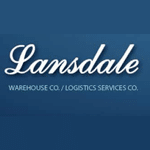How to Make Your Warehouse Safer For Everyone
Warehouses and loading docks can be dangerous work areas. The potential of accidents involving forklifts or falls require continued vigilance plus updates on safety standards whenever necessary.
To protect falls, the Occupational Safety and Health Administration (OSHA) requires protection for employees such as guardrails, toe-boards, and protective equipment like safety gates. They have good reason for the standards: the agency reports that falls account for 20 percent of all fatal (345 annually) and lost-work-day injuries (202,066 annually). The establishment of guardrail, safety net, or personal fall arrest systems protect workers who operate at least four feet above a lower level. The changes prevent 29 deaths and nearly 6,000 lost-work-day injuries every year.
What areas of the warehouse are most vulnerable to accidents and what can be done to make sure they don’t happen? Here are a few warehouse safety tips:
Multi-level rack picking systems. These modules that handle order fulfillment are typically constructed using a metal support structure involving handrails, landings, and stairways. Products stored in racks are picked to conveyors and other transportation systems. The problem is, these work areas are often very small and contained within the rack system. Typical mezzanine barriers do not fit, so special barriers are needed to configure to these systems.
Vacant docks. Open dock doors that are not adequately protected can be extremely dangerous. To mitigate the danger, facilities need to install barriers near the edge of the dock door. These barriers need to have an element of resistance so they can stretch across wide openings and stop up to 30,000 pounds with minimal damage.
Plant floors. Racks, powered vehicles, and workers on foot can increase the potential of a collision. While overhead walkways are ideal to separate people from vehicles, they are not always practical. The best way is to incorporate floor marking and safety signs that control movement. The proper signage and markings can signal speed limits, right of way standards, procedures for drivers who need to remain their vehicle during loading or unloading. The warehouse can also establish separate doors for pedestrians and vehicles, restricted areas, and special areas for storing hazardous materials.
Elevated platforms. These present the most common areas where falls are likely. According to OSHA standards, all must have handrails and gates around the edges. When gates are opened for loading and unloading, companies need to ensure there are no exposed areas where workers can fall. One way to make this happen are dual reciprocating barriers. These create a controlled access area that prevents the inner and outer gates from opening at the same time. For example, the best models ensure both gates work at the same time: When the outer gate opens to allow pallets in, the inner gates automatically closes to keep workers out. Some designs include a raised toe board to prevent materials from falling over the elevated edge, or they include a safety latch for the outer gate that only works when workers stand outside the work zone, which prevents it from being raised accidentally from workers located inside the work zone.
Being smart about safety is not only required, but it will help defray costs in the long run. What type of safety training does your company employ? Has your warehouse operation improved over time when it comes to safety?









